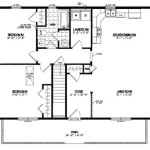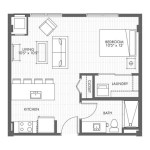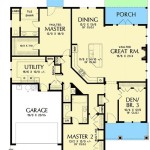How To Change Floor Plan Size in Revit
Revit, a Building Information Modeling (BIM) software developed by Autodesk, is a powerful tool used extensively in architecture, engineering, and construction. Its parametric modeling capabilities allow users to create and modify designs efficiently. One common task in Revit is adjusting the floor plan size. This article will provide a comprehensive guide on how to effectively manage and modify floor plan dimensions within Revit.
Before delving into the specific methods, it is crucial to understand the underlying principles of Revit. Unlike traditional CAD software, Revit utilizes a parametric system. This means that elements are defined by parameters, which can be adjusted to affect the entire model. Changes made to one component can automatically update related components, ensuring consistency and accuracy. Therefore, altering the floor plan size requires careful consideration of how these parameters and relationships will be affected.
Several methods exist for changing the floor plan size in Revit, each catering to different scenarios and levels of precision. The chosen method depends on the complexity of the design, the desired outcome, and the specific requirements of the project.
Modifying Dimensions Directly
One of the most straightforward ways to change the floor plan size is by directly manipulating the dimensions. This method is suitable for simple adjustments where specific measurements are known and need to be implemented precisely.
To begin, open the floor plan view in Revit. Ensure that the dimensions are visible. If they are not, use the “Aligned Dimension” tool located under the "Annotate" tab. This tool allows the creation of permanent dimensions that remain associated with the elements they measure. It is important to note that temporary dimensions, which appear when selecting elements, can also be used; however, permanent dimensions offer greater control and clarity.
Select the dimension line that corresponds to the length or width of the floor plan that needs to be adjusted. Clicking on the dimension value will allow it to be edited. Enter the desired new dimension value and press "Enter." Revit will automatically adjust the associated walls and elements to match the new dimension. This process can be repeated for all other relevant dimensions to achieve the desired floor plan size.
It is crucial to understand the constraints that may be in place. If certain elements are locked in place or have defined relationships that prevent them from moving freely, Revit may display a warning message indicating that the adjustment cannot be made. In such cases, it is necessary to unlock the constrained elements or modify the relationships before proceeding with the dimension change. Unlocking elements can be done by selecting them and clicking on the padlock icon that appears near the element.
This method offers precision and control, allowing for specific adjustments to be made. However, it requires careful attention to detail and an understanding of the constraints within the model. Incorrectly modified dimensions can lead to unintended distortions and inaccuracies.
Using the Scale Tool
The Scale tool offers a method for resizing the entire floor plan proportionally. This is particularly useful when the design needs to be enlarged or reduced by a certain percentage or ratio, rather than by specific measurements.
To use the Scale tool, first select all the elements that constitute the floor plan. This can be achieved by using a selection box that encompasses the entire plan or by individually selecting elements while holding down the "Ctrl" key. Be sure to include all relevant elements, such as walls, doors, windows, and any interior fixtures. Failing to select all elements will result in an incomplete rescaling.
Once all elements are selected, navigate to the "Modify" tab and locate the "Scale" tool. Click on the tool to activate it. The Scale tool offers several options, including graphical scaling and numerical scaling. Graphical scaling allows for interactive resizing by visually manipulating the selected elements. Numerical scaling, on the other hand, requires specifying a scale factor or a ratio.
For precise scaling, the numerical option is generally preferred. Choose the "Numerical" option and enter the desired scale factor. A scale factor of 2 will double the size of the floor plan, while a scale factor of 0.5 will reduce it by half. Alternatively, a ratio can be specified, such as 1:2 to reduce the plan to half its original size. After entering the scale factor or ratio, click "Apply" to execute the scaling.
The Scale tool intelligently resizes all selected elements proportionally, maintaining their relative positions and dimensions. However, it is essential to be aware of the potential impact on annotation elements, such as dimensions and text. These elements may need to be adjusted manually after scaling to ensure they remain legible and accurate.
Furthermore, scaling can affect the performance of the model, especially when dealing with large and complex projects. Increasing the size of the floor plan can increase file size and potentially slow down the software. Therefore, it is advisable to use the Scale tool judiciously and to consider the overall impact on the model's performance.
Utilizing Grids and Levels
Revit uses grids and levels as fundamental reference points for organizing and structuring the building model. Adjusting the positions of these grids and levels can effectively change the overall size and proportions of the floor plan.
Grids are used to define the structural layout of the building, typically representing the centerlines of walls and columns. To modify the floor plan size using grids, first locate the grids that define the boundaries of the plan. Select a grid line and drag it to the desired new position. As the grid line is moved, the associated walls and elements that are constrained to the grid will automatically adjust their positions accordingly. This method allows for precise control over the dimensions of the floor plan, while maintaining the structural integrity of the model.
Levels, on the other hand, define the vertical heights of the building. While directly modifying level heights doesn't change the floor plan *size* in terms of area, it does impact the overall building volume and the relative positions of elements across different floors. Moving a level will shift all elements associated with that level, potentially influencing the vertical proportions and relationships within the building.
Grids and levels offer a powerful method for managing the overall structure of the Revit model. By strategically adjusting their positions, the floor plan size and proportions can be effectively modified. However, it is crucial to understand the relationships between these elements and the other components of the building. Changes to grids and levels can have cascading effects, so careful planning and consideration are essential. It is recommended to review the entire model after making adjustments to grids and levels to ensure that all elements are correctly positioned and aligned.
In addition to directly dragging grid lines, it’s possible to adjust their position by modifying their numerical values. Clicking on a grid bubble reveals a temporary dimension indicating its distance from another grid. Changing this dimension, similar to how wall dimensions are adjusted, will reposition the grid. This provides more precision than dragging.
The use of grids and levels is particularly beneficial in the early stages of design, when the overall layout and structure are being established. They provide a flexible framework for exploring different design options and quickly adjusting the floor plan size and proportions.
Careful planning and consideration of the relationships between elements are crucial when modifying floor plan sizes in Revit. Regularly reviewing and validating the changes is recommended to maintain accuracy and consistency throughout the project.

Scaling Floor Plan View On A Sheet Without Changing Scale In Actual Autodesk Community

How To Scale Floor Plan Image In Revit

Scaling Floor Plan View On A Sheet Without Changing Scale In Actual Autodesk Community

Solved Can T Change Scale Of The Drawings Only In 2 Plans Autodesk Community

Solved Changing The Scale Of A View On Sheet Revit Uses An Arbitrary Base Point How Can I Change This Autodesk Community

Revit Floor Plan Tutorial Bim Pure Blog

Revit Floor Plan Tutorial Bim Pure Blog

How To Change Room Tag Size In Revit Tutorial

How To Jazz Up Floor Plan Graphics In Revit Tutorial

Easy Ways To Set Floor Levels In Revit 5 Steps With Pictures
Related Posts








